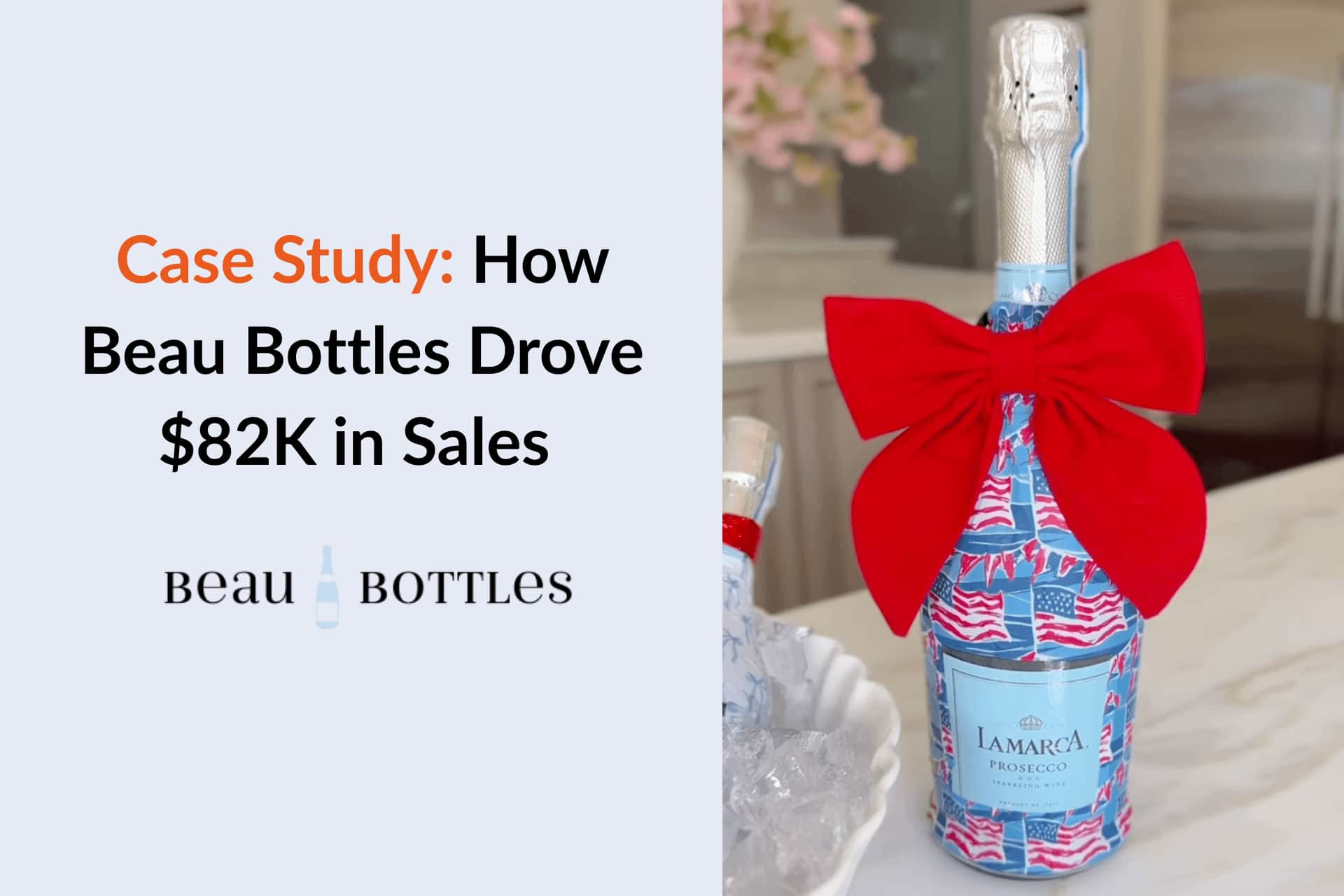





Even though ViralMango is a strong platform, many users have been pointing out several shortcomings like unclear or overly simple pricing, weak integrations and lack of API support, and concerns over outreach quality.
These cons have driven brands and creators to look for alternatives that offer more transparency, deeper feature sets (like influencer relationship management, content licensing, or affiliate tracking), and stronger support or agency-like services.
Below are the Top 10 alternatives we will explore in this article:
There are several reasons why businesses are actively exploring alternatives to ViralMango, as reflected in user feedback on platforms such as G2 and Reddit:
ViralMango’s influencer search functionality is restricted to broad follower categories (e.g., max-10k or 5k–1k), which limits the ability of brands to precisely segment and identify the right creators for their campaigns.
The platform is often described as primarily a media-kit builder that provides live statistics rather than a comprehensive influencer marketing solution. As a result, many users find themselves relying on additional tools to cover essential needs such as CRM, outreach automation, and end-to-end campaign management.
Users frequently highlight the lack of clear information regarding ViralMango’s pricing tiers. While directories often list it as “Starting price: See details” and emphasize the free plan, this lack of transparency makes it difficult for teams to plan budgets effectively, especially when scaling campaigns.
Compared to its competitors, ViralMango has relatively few independent reviews and minimal community discussion. This limited footprint reduces confidence among prospective customers, as there is little publicly available evidence or case studies to validate its effectiveness for larger-scale influencer marketing initiatives.
Our comparison focuses on several key aspects:
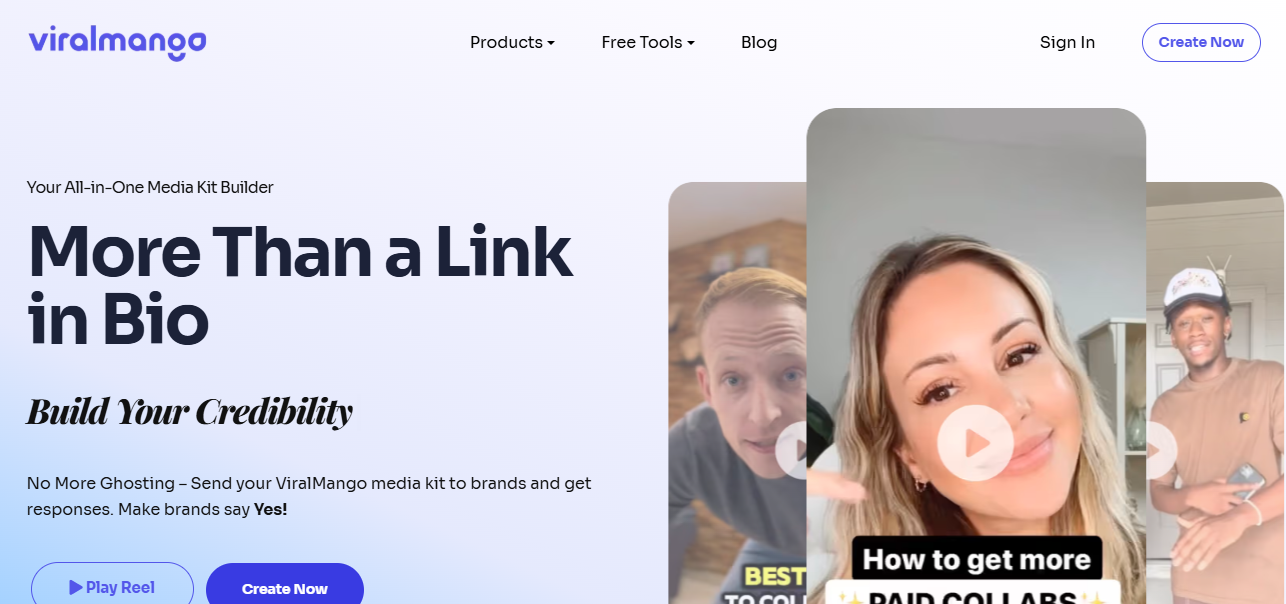
Best For: ViralMango is best for brands that want a simple way to discover and collaborate with micro/nano creators through a built-in marketplace and lightweight campaign tools. It suits small to mid-sized teams that prioritize quick activations and straightforward workflows over highly advanced analytics.
Platform Coverage:
Pricing: ViralMango uses customized, tiered plans (starter to enterprise) with pricing provided on request; some sources mention a free trial/demo upon inquiry. Public, plan-by-plan pricing is not fully disclosed; brands must request a quote.
Reviews: No verified public reviews available on major platforms such as G2, Capterra, or Trustpilot.
Ease of Use (UX/UI): Users describe the dashboard as modern and intuitive, with straightforward setup—especially for smaller campaigns. Navigation emphasizes discovery and marketplace browsing, helping teams move quickly from sourcing to outreach.
Customer Support: ViralMango provides email and live chat support, plus FAQs and onboarding guides. Sentiment is generally positive for day-to-day help, though advanced troubleshooting may take longer.

Best For: Influencer Hero is best for eCommerce and D2C brands looking to manage and scale influencer campaigns at any level, from small seeding programs to enterprise-scale operations. With strong automation, multi-platform coverage, and ROI-focused tools, it’s especially effective for brands that want measurable sales results from influencer partnerships.
Platform Coverage:
Pricing: Influencer Hero offers flexible pricing plans to accommodate growing brands. All plans include core features and can scale as the influencer program grows.
Reviews: 5.0 / 5.0 (Capterra)
Ease of Use (UX/UI): Influencer Hero is widely recognized for its intuitive and streamlined interface. Users highlight the drag-and-drop workflows, clean dashboards, and automation tools that eliminate repetitive tasks. Even non-technical teams find it easy to set up and manage campaigns in under an hour.
Customer Support: Customer support is one of Influencer Hero’s standout strengths. Every plan includes a dedicated account manager from day one, 24/7 live chat, and responsive email support. Pro plan users even gain access to a private Slack channel, while all customers benefit from onboarding sessions, written guides, and video tutorials.
ViralMango’s pricing is not transparent and requires a quote request , whereas Influencer Hero offers clear, scalable pricing starting at $649/month with no hidden costs. This makes Influencer Hero far more accessible for brands planning budgets around ROI-driven influencer campaigns.
In terms of functionality, ViralMango focuses mainly on marketplace-driven collaborations and micro-influencer connections . Influencer Hero, on the other hand, is a true all-in-one platform, offering influencer discovery, AI-powered outreach, CRM, content collection, affiliate tracking, storefronts, and gifting integrations.
Finally, support and scalability set Influencer Hero apart. ViralMango provides basic live chat and email support , but Influencer Hero ensures 24/7 real-human assistance, account managers, and Slack support for Pro users.
For brands serious about scaling influencer marketing in 2025, Influencer Hero offers more robust tools, transparent pricing, and unmatched support.
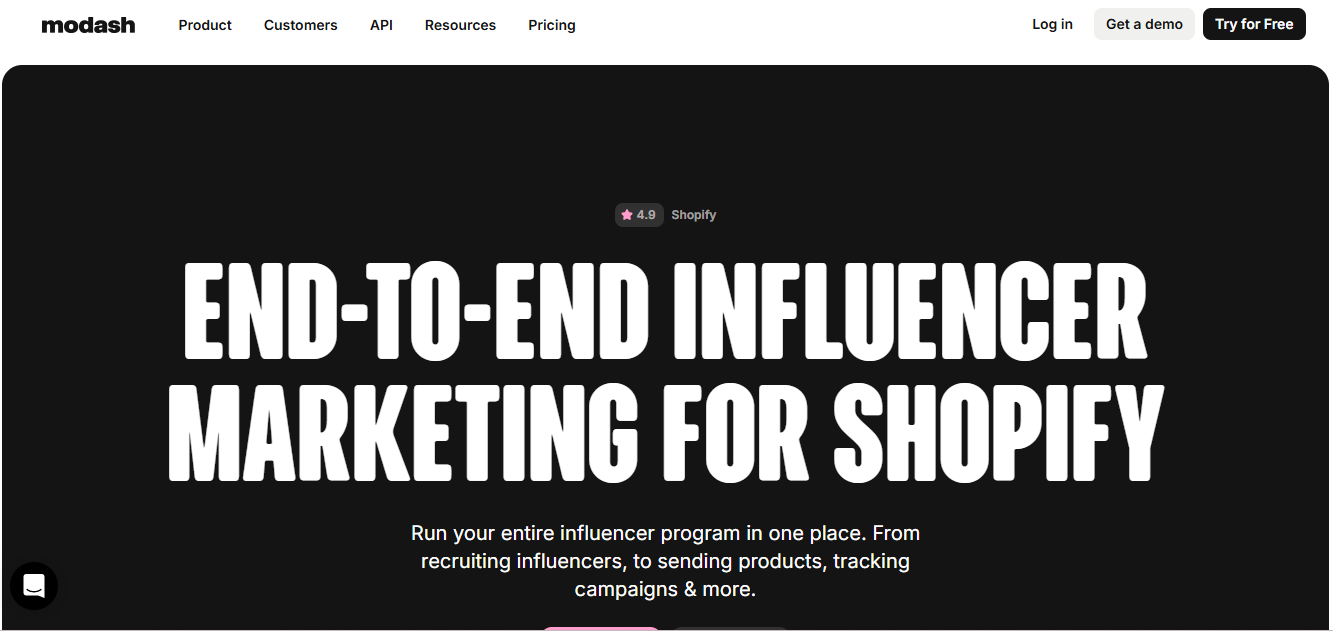
Best For: Modash is best suited for brands and eCommerce businesses that want a scalable, data-driven influencer marketing platform, especially those operating with Shopify integrations. Its strength lies in enabling teams to run global influencer campaigns with advanced search filters and affiliate automation, making it a preferred choice for mid-sized to enterprise brands.
Platform Coverage:
Pricing: There are different plans and options.
Reviews: 4.7/5 (G2)
Ease of Use (UX/UI): Users often highlight Modash’s clean interface and logical workflows, which simplify the process of moving from influencer discovery to campaign management. Its real-time analytics dashboard ensures teams can track performance without switching to external tools. While the platform is feature-rich, the learning curve is considered moderate, with most teams adapting quickly thanks to intuitive navigation.
Customer Support: Customer support is praised for being responsive and knowledgeable, offering direct guidance during onboarding and campaign setup. While Modash lacks 24/7 live chat, its dedicated account managers and structured onboarding help users maximize the platform’s features. The support team is also noted for transparency in addressing feature limitations like eCommerce integrations.
Modash distinguishes itself with its massive creator pool of 350M+ profiles and AI-powered search tools, making it a better fit for brands needing global reach. ViralMango, on the other hand, emphasizes its Collaboration Marketplace and micro-influencer focus, which appeals to small and mid-sized brands looking for authentic engagement.
In terms of pricing, ViralMango lacks transparency and requires custom quotes, while Modash publicly offers plans starting at $199/month, scaling up to $499/month for advanced performance plans. This makes Modash more predictable and easier to budget for, whereas ViralMango’s tiered pricing may suit brands with variable needs but can create uncertainty.
Ultimately, choose Modash if you prioritize scalability, AI-powered discovery, and streamlined Shopify automation, and opt for ViralMango if your brand is smaller, marketplace-driven, and primarily focused on connecting with micro-influencers.

Best For: Upfluence is best for eCommerce brands, especially those on Shopify or Amazon, that want to manage influencer discovery, campaign execution, affiliate tracking, and payments in a single end-to-end platform.
Platform Coverage:
Pricing:
Reviews: 4.5/5 (G2)
Ease of Use (UX/UI): Users highlight that while Upfluence has a robust feature set and modern dashboard, it comes with a slight learning curve for beginners. Once onboarded, the navigation is smooth, and the ability to streamline influencer search, outreach, and affiliate tracking in one system is considered highly efficient.
Customer Support: Upfluence offers dedicated account managers and responsive support, which users appreciate when handling complex campaign setups. However, some reviews suggest that smaller clients may not always receive the same level of priority as enterprise customers, especially when onboarding.
When comparing ViralMango and Upfluence, the most notable difference lies in pricing transparency and contract structure. ViralMango offers customized pricing with tiered plans that can fit small businesses or agencies, while Upfluence starts at $1,276 per month on annual contracts, making it a more significant investment.
Upfluence stands out for deep eCommerce integrations with Shopify and Amazon, providing ROI-focused tracking, sales attribution, and the ability to identify existing customers as influencers. ViralMango, by contrast, appeals to smaller brands with its collaboration marketplace and micro-influencer focus, though it has a smaller pool of creators and less advanced analytics.
Ultimately, businesses looking for a scalable, enterprise-grade solution with robust tracking should consider Upfluence, while those seeking a more affordable and flexible option for quick collaborations may prefer ViralMango.

Best For: Captiv8 is best suited for enterprise brands and large agencies that need extensive influencer discovery, competitive intelligence, and robust campaign tracking. Its pricing and feature set make it more attractive for companies with significant influencer marketing budgets.
Platform Coverage:
Pricing: There are different pricing options:
Reviews: 4.1/5 (G2)
Ease of Use (UX/UI): Users note that Captiv8 offers a powerful but complex platform. While the dashboards provide extensive filters, campaign management, and customizable reporting, the depth of options can feel overwhelming for smaller teams. Larger organizations, however, benefit from its structured workflows and collaboration tools that allow multiple stakeholders to manage campaigns simultaneously.
Customer Support: Feedback around Captiv8’s customer support is mixed. Some users appreciate the ability to collaborate directly with creators through the platform, but many Reddit threads and reviews highlight slow responses, unresolved support tickets, and payment-related issues. This has led to frustration among both brands and creators relying on the tool.
ViralMango and Captiv8 take very different approaches to influencer marketing. ViralMango focuses on accessibility and affordability, offering a marketplace model that helps brands quickly connect with micro and nano influencers. Its pricing is typically more transparent and flexible, making it appealing to small and mid-sized businesses .
Captiv8, on the other hand, is clearly designed for enterprise-level brands, with pricing starting at $25,000 annually plus a $3,000 onboarding fee, and storefront features costing an additional $20–30K per month. While Captiv8 offers advanced analytics, sentiment analysis, and enterprise storefront capabilities, its cost and limited flexibility make it less practical for smaller teams.
In short, brands looking for affordable, easy-to-use influencer management will find ViralMango more suitable, while those with large budgets, dedicated marketing teams, and a need for deep data insights may justify Captiv8’s investment.

Best For: CreatorIQ is best for large enterprises, global brands, and agencies seeking a comprehensive end-to-end influencer marketing solution. It’s particularly well-suited for companies with higher budgets looking for advanced reporting, campaign management, and API-backed analytics.
Platform Coverage:
Pricing: There are different plans:
Reviews: 4.7/5 (G2)
Ease of Use (UX/UI): Users highlight that while CreatorIQ comes with a feature-rich and enterprise-level dashboard, it can feel overwhelming at first due to its depth. However, once onboarded, the navigation is streamlined with customizable dashboards and approval flows that make large-scale influencer management more manageable.
Customer Support: CreatorIQ is consistently praised for its strong customer support structure, including a dedicated implementation manager, customer success team, and quarterly strategy reviews. Many users emphasize that CreatorIQ goes beyond being a tool, offering strategic input and hands-on assistance that help maximize campaign results.
ViralMango is positioned as a lightweight, marketplace-driven solution that helps brands connect quickly with micro-influencers through its collaboration marketplace and simplified pricing models. In contrast, CreatorIQ offers an enterprise-level end-to-end influencer marketing ecosystem, equipped with advanced discovery filters, real-time API integrations, and fully customizable reporting.
Pricing also highlights a significant distinction. ViralMango’s pricing is customized and less transparent, catering to small and mid-sized businesses, while CreatorIQ operates on annual contracts only, typically ranging from $2K–$5K per month depending on the package. This makes CreatorIQ more suitable for larger enterprises with bigger budgets, whereas ViralMango is more accessible for smaller brands seeking simplicity.
Ultimately, users should choose CreatorIQ if they need scalability, enterprise-grade analytics, and strategic support, while ViralMango is better for brands focused on cost-effective micro-influencer collaborations without the need for deep integrations or enterprise-level reporting.

Best For: HypeAuditor is best for brands and agencies that need advanced influencer discovery and fraud detection across multiple platforms like Instagram, TikTok, YouTube, Twitch, X, and Snapchat. It’s especially valuable for businesses that want deep analytics and audience authenticity insights to ensure genuine collaborations.
Platform Coverage:
Pricing: HypeAuditor’s pricing is customizable, with the standard “Business” plan starting at around $10,000/year. Pricing can be adjusted based on the number of reports, active campaigns, and platform usage. They also offer a 24–48 hour free trial for new users.
Reviews: 4.6/5 (G2)
Ease of Use (UX/UI): Users generally find HypeAuditor’s interface robust but complex at first, given the depth of data and reporting features. The platform offers powerful filtering and analytics, but beginners may need onboarding to unlock its full value. Once familiar, marketers appreciate how easy it is to set up campaigns, run reports, and share branded dashboards.
Customer Support: HypeAuditor provides onboarding assistance, live demos, and responsive account management. Many users highlight that the support team is knowledgeable and willing to guide them through advanced campaign setups. However, some note that the learning curve means they often rely on support initially to get the most out of the tool.
When comparing ViralMango and HypeAuditor, the biggest difference lies in pricing and depth of analytics. ViralMango offers customized, tiered pricing that is more approachable for small and mid-sized businesses, while HypeAuditor’s standard plan starts around $10,000/year, making it more suitable for enterprise budgets.
In terms of features, HypeAuditor excels in advanced discovery and fraud detection, offering AI-powered filters, audience authenticity checks, and social listening capabilities. This makes it ideal for brands prioritizing data accuracy and ROI tracking. ViralMango, on the other hand, shines with its collaboration marketplace and focus on micro-influencers, making influencer partnerships easier and faster to launch without heavy analytics.
If you’re a large brand or agency that needs deep insights, e-commerce integration, and enterprise-level reporting, HypeAuditor is the stronger choice. If you’re a small to mid-sized brand that values affordability, simplicity, and direct access to a marketplace of influencers, then ViralMango is the more practical option.

Best For: GRIN is best for eCommerce brands, especially those on Shopify or Amazon, looking to manage and scale influencer, affiliate, and creator-led marketing campaigns. It’s particularly strong for brands focused on building long-term creator partnerships rather than one-off collaborations.
Platform Coverage:
Pricing:
Reviews: 4.5 / 5.0 (G2)
Ease of Use (UX/UI): Users highlight GRIN’s intuitive and professional interface, making campaign and creator management seamless once set up. However, some note that the initial learning curve is a bit steep because of the wide feature set, but once onboarded, navigation and daily use are straightforward.
Customer Support: Customers generally praise GRIN’s dedicated account managers and responsive support team, who provide personalized assistance and campaign guidance. That said, some users feel support is slower during peak campaign periods or when more technical issues arise.
While ViralMango focuses on simplicity and affordability with its collaboration marketplace, GRIN is built as a robust enterprise-grade platform for eCommerce brands. ViralMango is ideal for small to mid-sized businesses seeking straightforward influencer discovery and campaign management at a lower cost. In contrast, GRIN caters to larger eCommerce brands, offering deep Shopify and WooCommerce integrations, advanced analytics, and CRM tools.
When it comes to pricing, ViralMango provides tiered, more accessible plans (with some customized quotes), making it better suited for brands on tighter budgets. GRIN, however, commands a premium price point, reflecting its advanced features, integrations, and automation.
In short, choose ViralMango if you’re looking for an easy-to-use, cost-effective marketplace to connect with influencers. Opt for GRIN if your brand needs enterprise-level analytics, eCommerce syncing, and full influencer CRM capabilities to scale influencer marketing at a professional level.
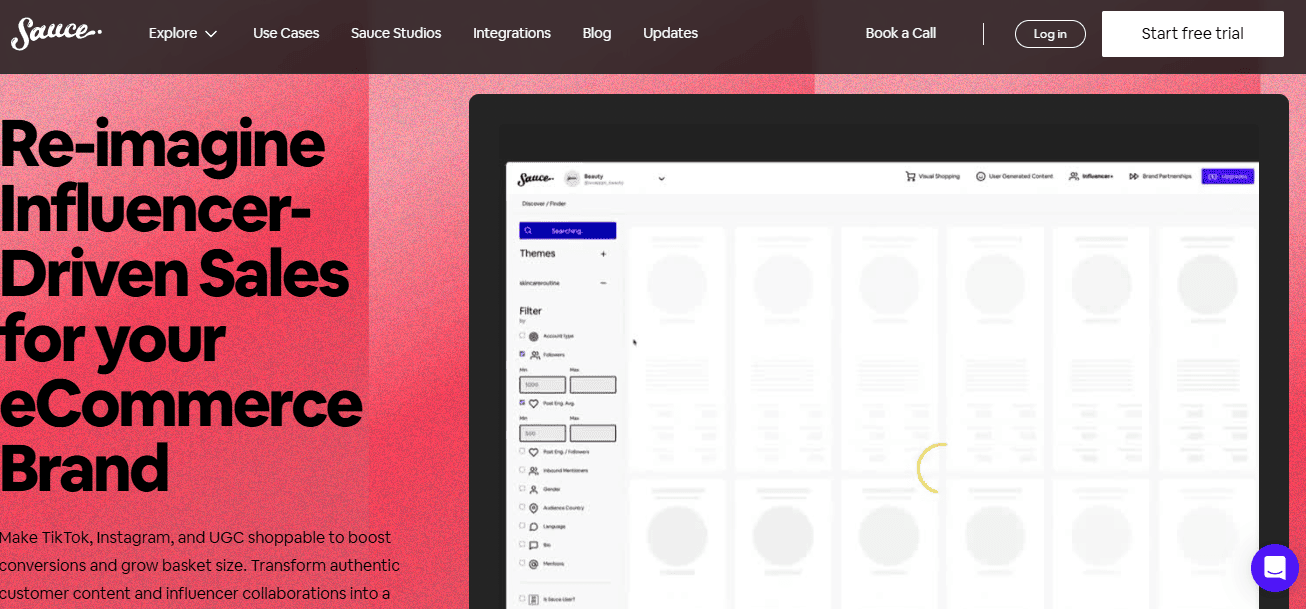
Best For: Sauce is best for eCommerce brands on Shopify, WooCommerce, or BigCommerce that want to turn influencer and customer content into shoppable experiences. It’s particularly effective for businesses prioritizing visual commerce, UGC-driven sales, and social-first campaigns.
Platform Coverage:
Pricing: Based on our research, Sauce offers different plans. All plans include a 7-day free trial with the option to switch or cancel anytime.
Reviews: 4.6 / 5.0 (G2)
Ease of Use (UX/UI): Users highlight Sauce’s visual-first interface and zero-code setup, which make it quick to embed galleries and video commerce features on websites and emails. Reviews consistently note that the platform is intuitive and responsive, with merchants praising its smooth integration with Instagram and TikTok.
Customer Support: Sauce offers free trials, live chat, and responsive support, which are praised by merchants for being fast and helpful. The platform is particularly commended for its onboarding guidance and troubleshooting, ensuring that even small brands can get started with minimal friction.
While ViralMango positions itself as an influencer marketplace and campaign management tool, Sauce focuses more on shoppable UGC and visual commerce. ViralMango provides discovery, analytics, and structured campaign workflows, whereas Sauce prioritizes conversions through visual shopping experiences.
In terms of pricing, Sauce offers transparent subscription plans starting at $50/month, scaling up to enterprise packages at $2,000/month. ViralMango, on the other hand, uses custom pricing that requires quotes, making it less predictable for small businesses.
Users should choose ViralMango if they want influencer discovery, outreach, and campaign CRM, while Sauce is the better choice for eCommerce brands that want to directly monetize UGC and influencer content into sales.
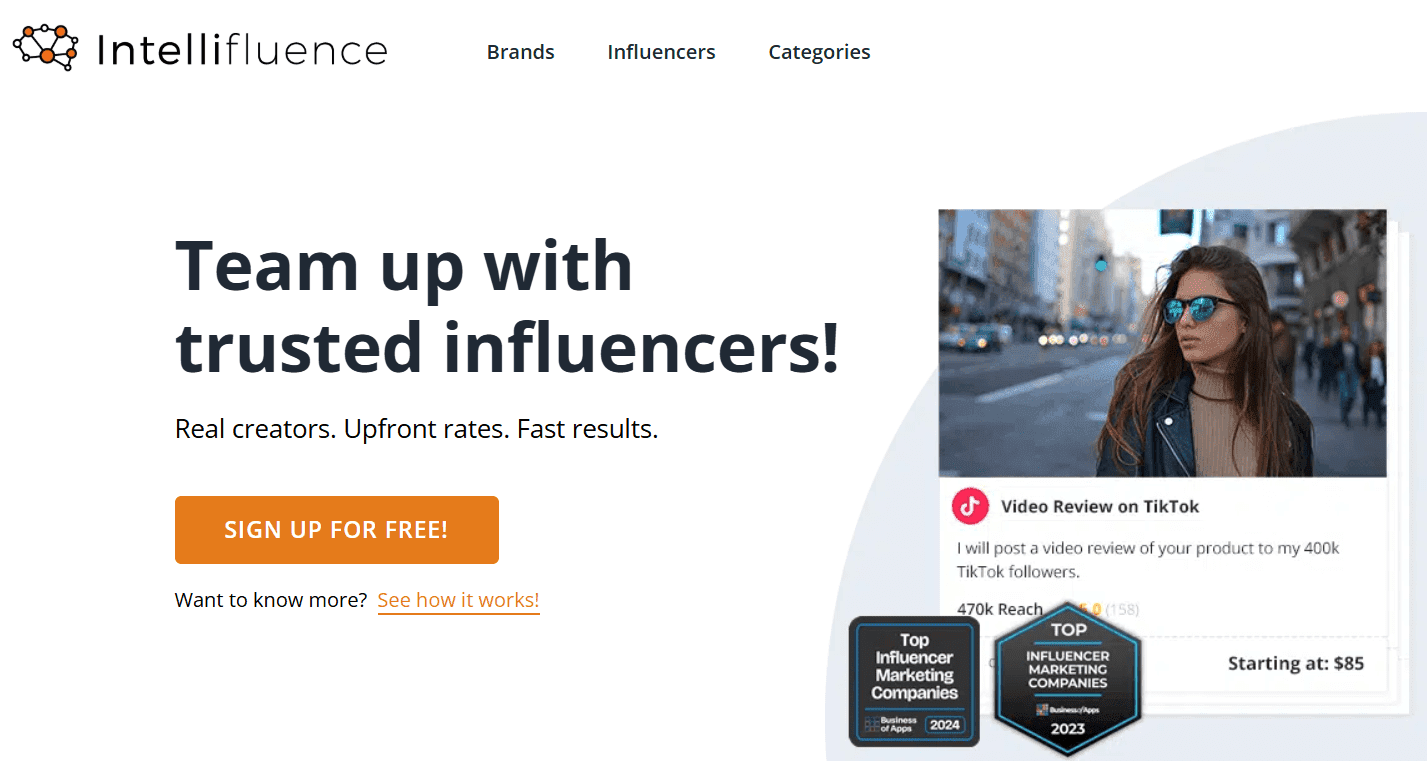
Best For: Intellifluence is best for small to medium-sized brands looking for flexible, scalable influencer marketing without long-term commitments. It’s particularly useful if you want to work with micro- and nano-influencers, generate UGC or product reviews, and test campaigns across multiple platforms.
Platform Coverage:
Pricing: Based on our research, there are different options and pricings:
Reviews: 3.9/5.0 (G2).
Ease of Use (UX/UI): Users generally describe Intellifluence as intuitive and easy to navigate, with a clean dashboard and straightforward workflows for campaign setup and influencer communication. However, some note that the mobile experience isn’t as smooth as the web version and that occasional bugs can appear.
Customer Support: Most users highlight the responsiveness and helpful guidance from the support team, supported by tutorials and resources for beginners. On the downside, campaign approvals and dispute resolutions can sometimes take longer than expected.
When comparing ViralMango vs Intellifluence, the biggest difference lies in pricing and approach to influencer management. ViralMango positions itself as a managed service with affordable pricing (around $1,000/month for 30–40 influencers), making it attractive if you prefer a hands-off experience and guaranteed influencer delivery. In contrast, Intellifluence offers flexible self-service plans starting from $0 (free) and scaling up to $599/month for managed service, giving you more choice depending on your budget and how involved you want to be.
ViralMango is ideal for brands that want predictable influencer volume and managed support at a fixed cost, while Intellifluence is better suited for brands that value flexibility, broader platform coverage, and pay-as-you-go pricing.
If you’re a smaller brand looking to experiment with micro- and nano-influencers, Intellifluence’s free and starter plans provide an accessible entry point. On the other hand, if you want a done-for-you service with predictable delivery, ViralMango may be the better fit.
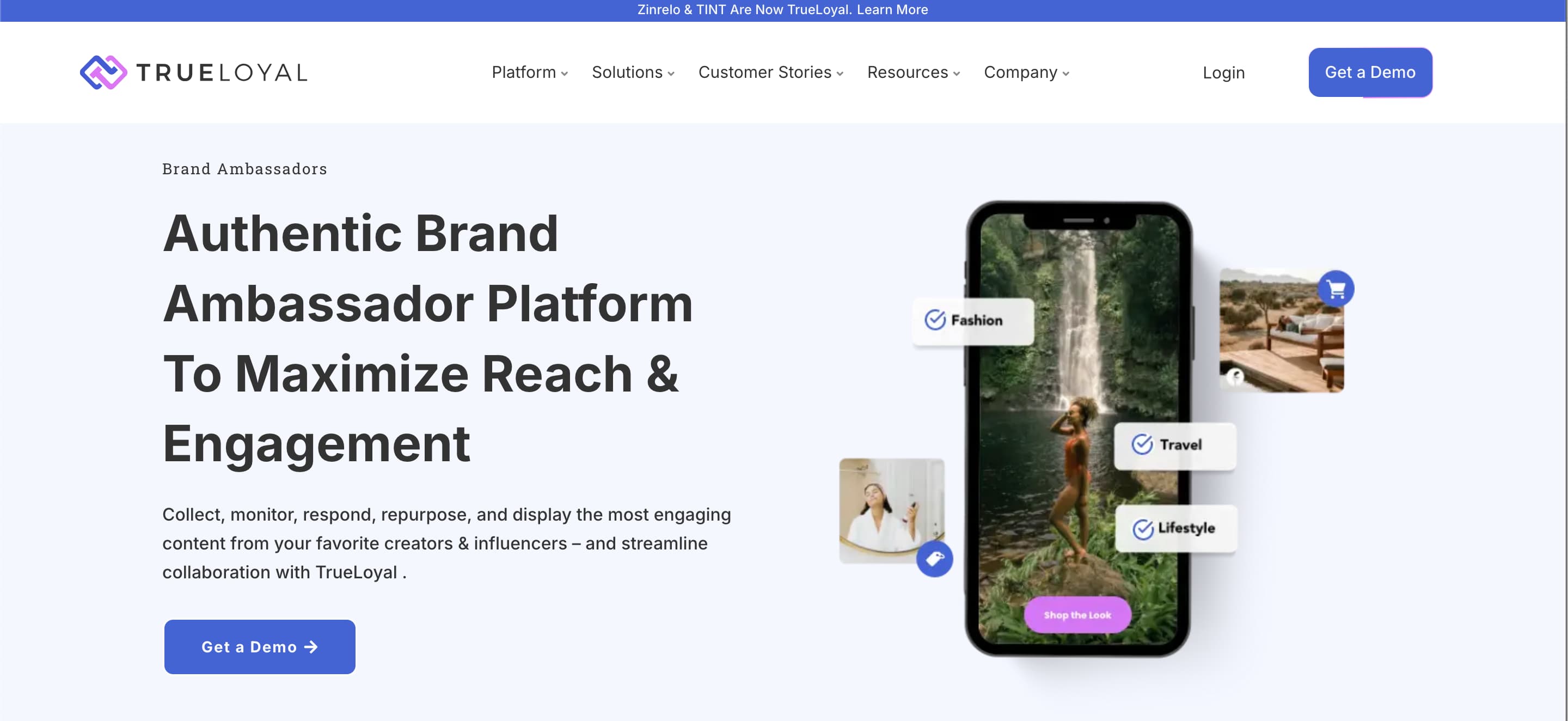
Best For: TrueLoyal is best for brands that want to leverage authentic ambassadors, creators, and influencers who already advocate for their products. It’s especially suited for eCommerce companies looking to boost conversions with UGC-driven social proof and on-site influencer content galleries.
Platform Coverage:
Pricing: Undisclosed.
Reviews: 4.3 / 5.0 (G2)
Ease of Use (UX/UI): Users note that the platform’s centralized hub makes it simple to collect, moderate, and repurpose creator and customer content. The workflow is designed for clarity, allowing teams to send briefs, secure rights, and publish assets in a streamlined way. Navigation is straightforward, with smart tagging and filters that make it easy to organize and activate content.
Customer Support: TrueLoyal provides dedicated support for brands during onboarding and campaign setup, ensuring that teams know how to maximize content workflows. Users also highlight the availability of strategist recommendations for influencer discovery, which helps companies find the right advocates quickly. The resources and guidance provided are considered reliable, especially for new users.
ViralMango focuses on a marketplace model where brands can discover influencers, negotiate deals, and run campaigns with built-in communication and analytics. By contrast, TrueLoyal is designed to centralize brand advocacy, working with influencers, creators, and even customers who already engage with your brand, and turning their content into shoppable social proof on product pages.
When it comes to pricing, ViralMango uses a tiered structure (starter to enterprise) and typically requires a sales quote, but it is positioned as affordable for small and mid-sized brands. TrueLoyal’s pricing is undisclosed, which can make budgeting less predictable, though its strong integrations with Shopify and Salesforce make it attractive for enterprise-level eCommerce brands.
In short, choose ViralMango if you want a fast, marketplace-driven way to connect with influencers, especially micro-influencers. Choose TrueLoyal if you want to scale UGC and brand advocacy, add social proof to your product pages, and integrate influencer workflows deeply with your eCommerce stack.
When exploring alternatives to ViralMango, it’s clear that brands have a wide range of influencer marketing platforms to choose from—each offering unique strengths. Some platforms stand out for their AI-powered influencer discovery and analytics, while others excel in UGC management, CRM workflows, or eCommerce integrations. Depending on your business needs, you may prefer a marketplace-style platform that gives you quick access to influencers or a more advanced all-in-one solution that centralizes everything from outreach to performance tracking.
Among the options, Influencer Hero emerges as one of the best alternatives, thanks to its end-to-end influencer marketing capabilities including discovery, outreach, campaign management, and detailed analytics. With its intuitive design and flexible pricing, it supports both growing businesses and enterprise-level brands.
If you want to streamline your campaigns and maximize ROI, booking a demo with Influencer Hero is a great next step to see how it can fit your specific goals.

You should consider features like influencer discovery, campaign management, reporting and analytics, UGC rights management, and eCommerce integrations. Pricing, scalability, and customer support are also key factors.
Influencer Hero offers a more comprehensive, all-in-one solution compared to ViralMango’s marketplace approach. It’s particularly strong in influencer outreach automation, analytics, and CRM, making it a great alternative for brands seeking more advanced tools.
Platforms with flexible pricing and straightforward UX/UI, such as Influencer Hero or Intellifluence, are often better suited for smaller businesses or startups that want to manage influencer marketing with limited resources.
Yes, many alternatives like Grin, Sauce, and TrueLoyal support both affiliate-based influencer campaigns and UGC-driven strategies, giving brands more ways to monetize partnerships.
You can easily get started by booking a demo with Influencer Hero, where their team will walk you through the platform’s features, pricing, and how it can fit your brand’s influencer marketing strategy.



Schedule a Demo with one of our media experts below.